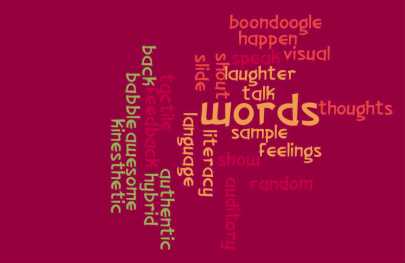
Total engagement, inclusion, and focus of each class is the Teacher’s dream realized. Creating moments where classroom materials marry with imaginations to transport us to new understandings can be rare or regular; much depends on the learning environment and collaboration of the team. USE HIGH LEVEL PERFORMANCE ABILITY TO ENGAGE STUDENTS.

Traditional teaching methods could look a lot like the scenario above; teacher-centered, other staff supporting from the background, students listening passively. Modern teaching methods, we’re told, differ greatly. They are more student-centered, individualized, self-paced, and teachers coach or support along side the students. But many ask, “What does that look like?”
Student-centered and individualized learning looks just like the picture above as well! Or parts of it does, the lesson, the progress towards understanding is similar; it does look similar to classrooms we are familiar with much of the time. One difference is the ordering, the timing, the implementation, and assessments of student learning could look and feel quite different. Students in the picture above are hearing a story, experiencing a conflict they are going to try to resolve, right before they engage in a hands-on project to test their knowledge and reasoning ability. A student centered classrooms has all the same learning goals as a traditional one, but we will more frequently ask students to do most of the work independently, once the framework and the exercise is explained. What is “added value” in modern environments is hands-on and digital components, teamwork, innovation, expressions of students (possible changing the direction of the lesson slightly!), and scientific inquiries into real inquiries the class will see along the way, question,and then engage in direct discovery about. Teaching with inquiry-based themes, hands-on projects, and teamwork on progress towards requisite products of the course, do require some restructuring of an educator’s ideas about learning components in the lesson and prioritizing of delivery of each part. On teachers part, it may require a robust effort to be more adaptable to change, and more adept at stepping out of the way of student dynamics when projects go in new or unexpected directions.
Teacher’s new goals in the educational environment include;
- guiding students into the realms of a subject or problem,
- show them a question or theme to be explored during the learning experience,
- responding with feedback at appropriate places,
- without doing too much to assist the learner.
Teachers also have to analysis, collect formative data, and plan for the learning needs trajectory of each student that can allow an for in-depth measurement of their skills, progress, and aptitudes. Some teacher’s assessments of students will need to be done in traditional ways through tests, and some of it will perhaps be digitally achieve portfolio materials, including student owned social media content that shows student expertise and mastery of a subject- not only to the administrators of a course or school, but potentially to employers or collaborators in the field and global economy. School has taken on whole new dimensions with large-scale internet availability to research, open resources to learn from, and private educational opportunities abounding. Competition from student attention and focus is much greater in today’s world.
Schools who remain competitive and deliver competent educational credentials must quick advance into the digital age of learning. Materials and courses should be UDL accessible and understandable to a large range of learning abilities, also available to the mobile or in-person student body, with easily understandable and transferable credits.